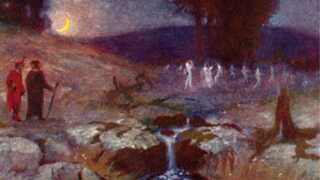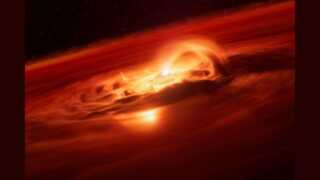For hundreds of years, people have spun stories of ghostly balls of blue light floating above marshes and swamps, called will-o’-the-wisps or “foolish fire.” They were believed to be ghosts, spirits or tricksters luring people off the right path. Now, a new lab study has tried to determine whether those mysterious embers might actually all begin life as feeble flares, being microlightning that ignites methane gas rising upward from deteriorating plants. This new concept sheds light on how a ‘flame’ can exist where there’s no obvious source of fire.Scientists Uncover Microlightning as the Source of Ghostly Blue Marsh LightsAs per Science.org, the phenomenon occurs where wetlands generate methane from decomposing vegetation. That gas rises through water and emerges as microbubbles at the surface. Each one can bear an electric charge, carrying some positive, some negative.When oppositely charged bubbles come close to each other, a small electric discharge, a microspark, can exactly leap between them. That spark gives methane a faint glow and produces the eerie blue light we see in the legends.The Spark Mechanism: Scientists Link Ghostly Blue Marsh Lights to MicrolightningThe scientists made a tank mimicking swamp conditions, filled with water and methane bubbles. With high-speed video and sensitive light detectors, they caught extremely short blips between bubbles in dense bubbling. These flashes are the microlightning events that can trigger methane oxidation. Experiments demonstrate that the system operates without requiring extreme heat or external ignition.Beyond the GlowThis research not only illuminates folklore but hints at a more general principle: under the right circumstances, electrical charges at interfaces (like where gas and water meet) can drive chemical reactions naturally. If that’s the case, then microlightning might also be participating in other natural venues, not only marshes.
Source: gadgets360.com


